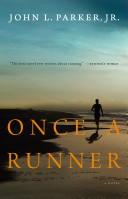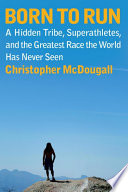Cat in the Stax: Running to the Library
By Ethan Shea
Running is a hobby I’ve had for a while now, but during the past couple years, I’ve become very passionate about the sport. Aside from the obvious physical benefits of exercise, running has been essential to maintaining my mental health. There’s truly no better feeling than finishing a long run on a crisp October morning.
The most difficult part of being a runner, at least for me, is motivation and consistency. Its easy to fall into a rut where you begin running less frequently, and that’s exactly what I’ve been doing lately. New trails, schedules, and opportunities have made the last month exciting, but coping with the loss of my treasured running routes back home hasn’t been easy.
Here at Falvey, we know the best motivation is found in a good book, so I recently ran to the library for help with getting my running back on track. If any one else is planning to hit the track or trails, here are a few books I’d recommend.

Once a Runner by John L. Parker Jr.
Once a Runner by John L. Parker Jr.
This is one of those classic running books your dad would probably recommend to you. Published in 1978, this novel thrived off the energy of the first running boom in the 1970s. It channels the gritty mindset of a runner who wants to be the best and is willing to do anything, even 60 consecutive quarter mile repeats, to achieve his goal.
The athlete in question is a fictional collegiate runner named Quenton Cassidy. Cassidy is a top-of-the-line athlete and four-minute miler, but he has lots of work to do before competing against John Walton, who holds the world record in the mile with a blazing time of three minutes and 50 seconds.
Admittedly, Once a Runner isn’t the most eloquent book I’ve ever read, and it will probably be most appealing to those who are already into running, but that’s what makes so called “cult classics” special. There’s just something about this story that stuck with generations of runners. The copy of this text I own was actually gifted to me by a former semi-pro runner I used to work at a running store with, so maybe I’ll continue the tradition and hand it off to another eager runner a couple decades from now.

Advanced Marathoning by Pete Pfitzinger
Advanced Marathoning by Pete Pfitzinger
Pete Pfitzinger is a former Olympic marathoner with a personal best time of 2:11:43 over the 26.2 mile distance (that’s about five minutes and two seconds per mile). Needless to say, Pete is fast, and that’s why I trust his training advice in Advanced Marathoning.
This book isn’t the most exciting read if you’re not a running geek, but it provides a lot of valuable information that any runner can benefit from. It really digs into the science of marathoning and the physiological changes that your body undergoes during training. The training plans provided are fairly advanced, but that doesn’t mean everyone can’t apply their principles to their own routines.
If the marathon isn’t your favorite event, Pfitzinger also has a book titled Faster Road Racing that provides similar sorts of information as Advanced Marathoning but focuses on distances from 5k to the half marathon. I’d say if you want to nerd out over some running science, Pfitzinger’s books were written for you.

Born to Run by Christopher McDougall
Born to Run by Christopher McDougall
This is without a doubt one of the most influential books about running out there. The true story follows members of the Tarahumara Native Mexican tribe as McDougall himself learns how the community is able to run distances of over 100 miles without injuring themselves.
One of the more controversial takes found in this book is McDougall’s belief that modern cushioned running shoes cause injuries. He points to the minimalist shoes worn by Tarahumara runners as evidence of the inferiority of traditional running shoes. The popularity of this book even led to a minimalist running craze. You may remember those Vibram foot-shaped shoes that people were running with a few years ago. Those are (unfortunately) an indirect result of Born to Run. Interestingly enough, minimalist running is not the main focus of this book. The text only spends a couple chapters talking about the benefits of minimalism, and the rest explores other aspects of training with the Tarahumarans.
I could go on about why I passionately disagree with McDougall’s opinions on running shoes, but I’ll let you read and make a decision on your own. Shoes aside, this story captivated millions, and it’s certainly worth reading if you’d like to dive into the running shoe debate for yourself.

Ethan Shea is a first year English Graduate Student at Villanova University and Graduate Assistant at Falvey Memorial Library.
0 Comments »
No comments yet.
RSS feed for comments on this post. TrackBack URI